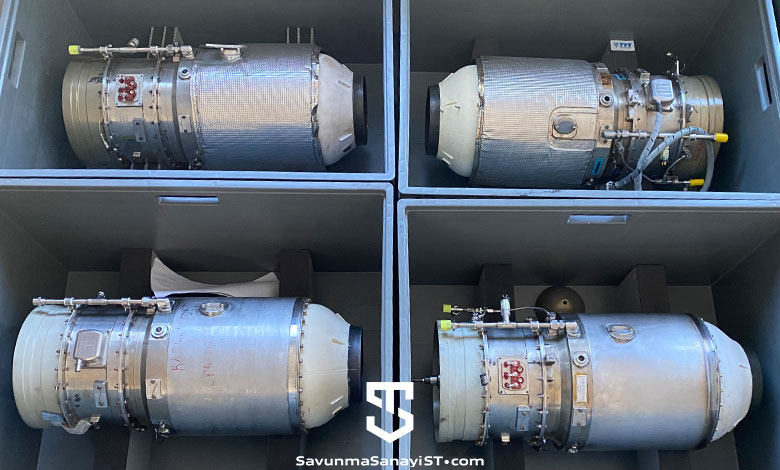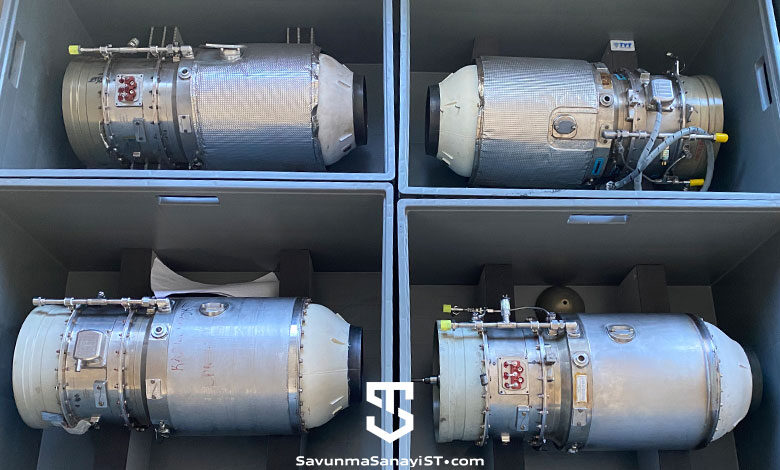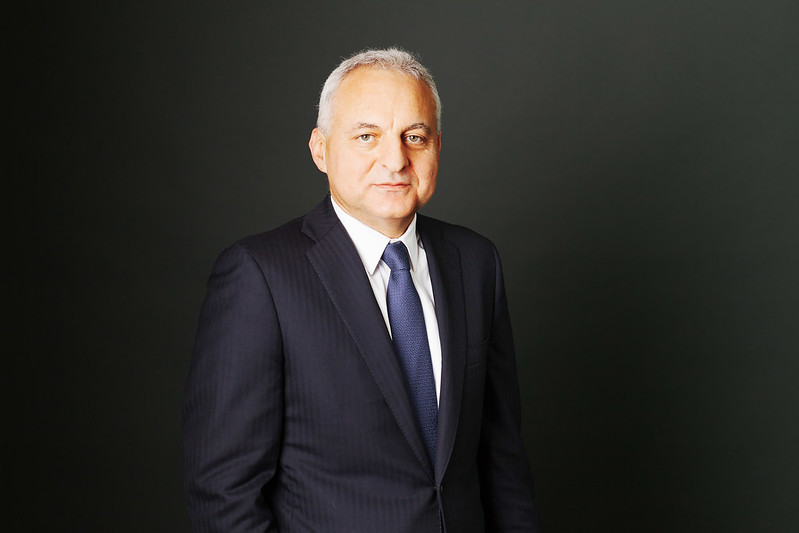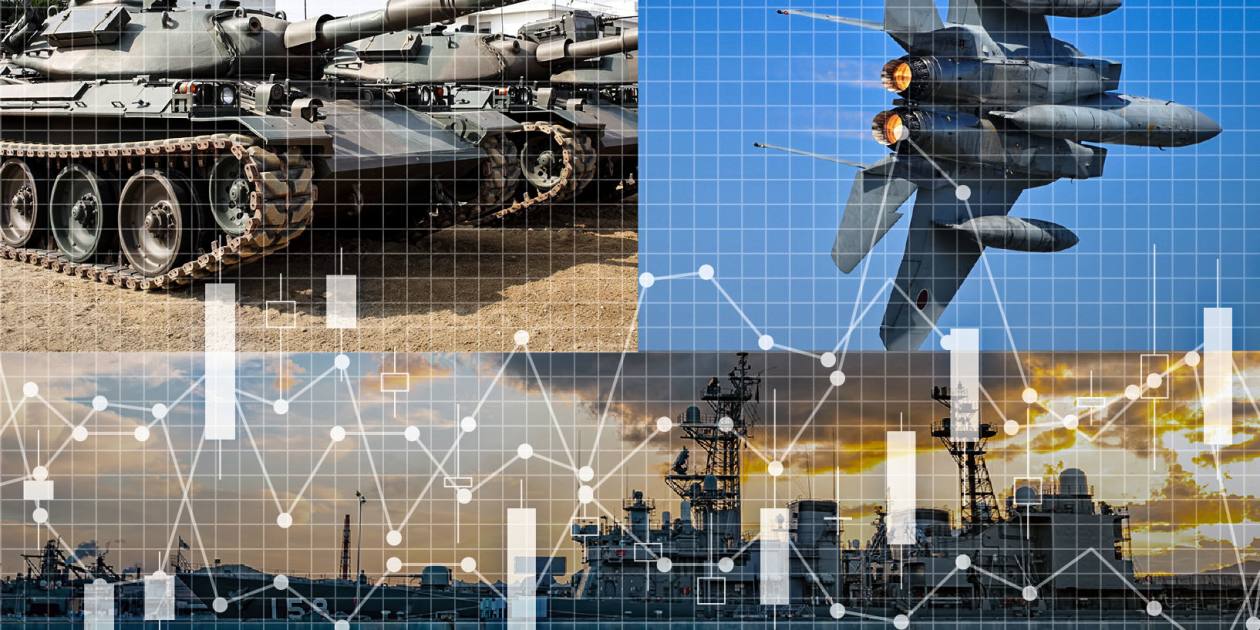Yeah but advancing technology gets harder as you go higher. This means that those who were left in the dust once can catch up easier as time passes. The technologies that took many decades to acquire becomes easier to acquire. Newcomers progress with strides rather than with baby steps. Türkiye jumped to single crystal from zero. Coatings, ceramics, composites, additive manufacturing are all being worked on. Design tools are better than ever. Those who are already ahead are not guarantied their positions. The same condition that made them get ahead applies to others. Same or similar drives and urges to explore and find ways to make better things.And will continue to be. Like I've said, no one stands still.
Latest Thread
- Poland Poland got approved to buy 360 Advanced Anti-Radiation GuidedMissile-Extended Range (AARGM-ER)
- Ukraine Ukrainian mechanics have mastered the repair of US M777 howitzers.
- TECHINT Germany arrests 3 suspected China spies
- Mil Intelligence Military court convicts US sailor of attempted espionage
- UK Is there any British officer or British military personnel here that I can discuss with?
You are using an out of date browser. It may not display this or other websites correctly.
You should upgrade or use an alternative browser.
You should upgrade or use an alternative browser.
TR Propulsion Systems
- Thread starter Combat-Master
- Start date
Exactly. That's what's important; if Türkiye is able to source its needs without outside interruption. Though, not to mention my post was made rather for the sake of correcting outright wrong information.For me the most important thing for us is to become independent from other countries for our aerial platforms. They(our "allies") shouldn't have the power to pull the plug on our projects by not delivering engines and making us their bitch. For us to have an independent foreign policy we have to be self sufficient. I don't give rats ass about what our ranking is among the top etc.
Civilian sector is a whole different game. We are already a significant part of the ecosystem. We make billions of dollars from our contracts for the most used engines in the world. To get more workload or more added value, we'd have to cooperate more. And invest more on material science and on developing more advanced manufacturing techniques.
And the same condition of diminishing returns that applies to the industry leaders apply to those who play the catch up. As you get closer to the leading edge, your progress automatically slows down. To overcome that, you'll need even more investment and commitment than the industry leaders. Considering the industrial size and capacity, as well as the overall economic sizes of said leaders, it's a hard call to say that any of those who try to play the catch up in the industry could achieve such. In a way, it's an invisible buffer.Yeah but advancing technology gets harder as you go higher. This means that those who were left in the dust once can catch up easier as time passes. The technologies that took many decades to acquire becomes easier to acquire. Newcomers progress with strides rather than with baby steps. Türkiye jumped to single crystal from zero. Coatings, ceramics, composites, additive manufacturing are all being worked on. Design tools are better than ever. Those who are already ahead are not guarantied their positions. The same condition that made them get ahead applies to others. Same or similar drives and urges to explore and find ways to make better things.
Last edited:
Being a designer and producer of a complete gas turbine engine is one thing and being a part of a big player’s eco system is another. There are many companies that produce critical parts for the likes of GE, RR, P&W and CFM.You should not forget Avio Aero(formerly Fiat) and GKN Aerospace Engines (formerly Volvo Aero). Avio Aero has for long been a leading manufacturer of gas turbine gear boxes whereas Volvo in casing and liners. Also apart from IHI, JAEC member companies, esepcially MHI is heavily involved in gas turbines, including gas turbines for aero engines and have reputable technology. Honorable mention goes for ITP of Spain.
You'r not doing any justice to what MTU means in the industry. They have been the industry leaders in devloping and manufacturing Blisks, a lot of breakthroughs originating from their labs and factories. Moreover, you shouldn't confuse yourself between if a country/company is not trying or cannot try. Lots of European nations, notably Germany, Italy and Sweden, are a core part of integral global gas turbine industry eco system.
Yeah, that's just delusional. IHI has already showcased their abilities of developing and manufacturing an extremely efficient turbofan with 2050K class TIT, aka XF-9. Where's Türkiye? Oh right, 1700K. The Japanese were important industry suppliers for decades, especially in the field of gas turbine shafts. They have also been RSPs of high-profile gas turbine programs. They are part of the leading edge of material science and engineering, pioneering composites and CMC. Not to forget they've partnered with UK in the past to bid for engine supplies for B737, although they ultimately lost out to CFM. Türkiye is not in any way comparable to any of the countries mentioned above. Don't even think of Safran.
That's not to say that Türkiye has done nothing. They've shown and is showing very respectable progress in the fields of gas turbine but in the same time, you shall not get ahead of yourself. No one's standing still.
View attachment 46389
Avio-Aero is now part of GE eco system. Same is valid for some of the other players. There is a lot of cross fertilisation among all these old and new manufacturers; Most of them in the form of joint ventures and being part of consortiums like CFM and RR. It is also a matter of financial and commercial strength in the market. Even if some of these somewhat smaller companies have the capability to produce a completely new engine, they don’t. The market is dominated by the big ones.
So when it comes to real time complete package of modern jet engine manufacturing capability, you really have 7 big players in the West. Even then the likes of MTU and IHI are under the wings of the likes of RR or GE
Political repartitioning of the market and technological breakthroughs can change the picture drastically. Imagine technologies like hybrids of detonation engines and turbine engines become a thing and realized by new makers. Or the iron curtain of the past century emerges in a new guise then the market can have a fresh construct with new makers and buyers. New players can have a good luck outside Europe and North America.
Serial production KTJ-3200 turbojet engines. A double-digit amount of engines will be delivered soon.

 www.savunmasanayist.com
www.savunmasanayist.com


Seri Üretim KTJ-3200 Motorları İlk Kez Görüntülendi
Kale Arge tarafından geliştirilen seri üretim KTJ-3200 Turbojet Füze Motorları, ilk kez görüntülendi. KTJ-3200'ler, SOM ve ATMACA füzelerine güç verecekler.
 www.savunmasanayist.com
www.savunmasanayist.com

A serial produced KTJ-3200 engine.

Rolls-Royce appoints Tufan Erginbilgic as Chief Executive Officer
 www.defenceturkey.com
www.defenceturkey.com
I wonder that why a korean so overrate japaneseYou should not forget Avio Aero(formerly Fiat) and GKN Aerospace Engines (formerly Volvo Aero). Avio Aero has for long been a leading manufacturer of gas turbine gear boxes whereas Volvo in casing and liners. Also apart from IHI, JAEC member companies, esepcially MHI is heavily involved in gas turbines, including gas turbines for aero engines and have reputable technology. Honorable mention goes for ITP of Spain.
You'r not doing any justice to what MTU means in the industry. They have been the industry leaders in devloping and manufacturing Blisks, a lot of breakthroughs originating from their labs and factories. Moreover, you shouldn't confuse yourself between if a country/company is not trying or cannot try. Lots of European nations, notably Germany, Italy and Sweden, are a core part of integral global gas turbine industry eco system.
Yeah, that's just delusional. IHI has already showcased their abilities of developing and manufacturing an extremely efficient turbofan with 2050K class TIT, aka XF-9. Where's Türkiye? Oh right, 1700K. The Japanese were important industry suppliers for decades, especially in the field of gas turbine shafts. They have also been RSPs of high-profile gas turbine programs. They are part of the leading edge of material science and engineering, pioneering composites and CMC. Not to forget they've partnered with UK in the past to bid for engine supplies for B737, although they ultimately lost out to CFM. Türkiye is not in any way comparable to any of the countries mentioned above. Don't even think of Safran.
That's not to say that Türkiye has done nothing. They've shown and is showing very respectable progress in the fields of gas turbine but in the same time, you shall not get ahead of yourself. No one's standing still.
View attachment 46389
Even japanese media admit japanese defence industry is falling and declining.
Their weapon now can never reach Korean one,just good in promotion.
They try their best to export their weapon for almost ten years with 0 success
Just repeat and repeat"we will sell submarine to Australian,we will sell US-2 to Indian,we will develop Shinsin X-2/F3......we will sell ship to indoensia....) 10000times
Xf-9 is a toy and never succuess,just like japanese cant develop a helicopter and buy UH-1then rename it UH-2
P-1 and C-2 were also huge failure
P-1 four jap engines stopped at same time
During structural testing, deformation of the XP-1 / XC-2 horizontal stabiliser was found, as well as cracking in the XC-2 undercarriage trunnion structure and parts of the fuselage; the cracking problem was reportedly difficult to address.
And will continue to be. Like I've said, no one stands still.

Japan's defense industry on the ropes amid growing threats
Reliance on U.S. for equipment grows as more companies stop production
the japanese not only stands but falling in the hole.
If everything continue to be,we are still super empire and korean still the vassel of Chinese and Japanese forever.
In your theory,Japanese can never reach Turkish technoloy, beacause when we using cannon in 1453,Japanese only used swords
Sad to see the Japanese weapons industry fall behind. They had a very impressive track record in the past, look up World War II and Imperial Japan had like 20 different super-weapon prototypes being worked on simultaneously.
You can see theBeing a designer and producer of a complete gas turbine engine is one thing and being a part of a big player’s eco system is another. There are many companies that produce critical parts for the likes of GE, RR, P&W and CFM.
Avio-Aero is now part of GE eco system. Same is valid for some of the other players. There is a lot of cross fertilisation among all these old and new manufacturers; Most of them in the form of joint ventures and being part of consortiums like CFM and RR. It is also a matter of financial and commercial strength in the market. Even if some of these somewhat smaller companies have the capability to produce a completely new engine, they don’t. The market is dominated by the big ones.
So when it comes to real time complete package of modern jet engine manufacturing capability, you really have 7 big players in the West. Even then the likes of MTU and IHI are under the wings of the likes of RR or GE
“Mitsubishi space jet”
“UH-X”
“C-2”
“P-2”
“Improved Wheeled Armored Personnel Carrier”
“X-2”
Japanese promoted all these and most of them had serious problems
For example
https://ja.m.wikipedia.org/wiki/装輪装甲車_(改)
On December 26, 2017, Komatsu Manufacturing Co., Ltd. and the Ministry of Defense announced that the completion date of development will be postponed after 2021 (Heisei 33) because there is a problem with the bulletproof plate of the prototype vehicle [2][3].
On June 2, 2018, it was announced that the development plan was blank[4], and on July 27, it was officially announced that the development project was officially canceled[5].
And
In the P-1, which was expected to have about 60 production machines, has developed a dedicated Dongara aircraft and a dedicated engine, so it requires an extremely high procurement unit price and maintenance costs. The procurement cost has soared about twice as much as the original 10 billion yen.
The government is looking forward to exporting the P-1, which was launched in March 2013 in Japan, and the mass media is also a rival of the latest patrol aircraft "P-8 Poseidon" (made by Boeing) adopted by the U.S. military. For example, Reuters reported that the Royal Navy is interested in P-1, and New Zealand and Canada are also promising markets. Unfortunately, P-1 doesn't have that kind of ability.
On January 13, the former Minister of Defense of Onoderanodera Goten visited London, England to sell the P-1 developed by Japan.
A senior official of the Ministry of Defense also said, "P-8 is the main for the next patrol aircraft sales battle in the UK, but P-1 is advantageous in terms of procurement prices, and unlike the P-8, it can be a powerful counter model because it can respond flexibly to system changes by customers."
However, like the export of C-2, the export of P-1 is just a rice cake drawn in the picture. Such procurement and operation costs are extremely high compared to competitors, and the only strange users who buy patrol planes that are suspicious of reliability are the Japan Maritime Self-Defense Force.
Last edited:
RR designed and built Tempest engine prototype within 18 Months from scratch. This should give us huge hope for what can be achieved in a few years time. If This is humanly possible We can at least try to do it with 6 years? (Which i thought was complete bullocks when Temel Kotil said it last week)
How Rolls-Royce’s Orpheus demonstrator will power FCAS innovation for UK
Craig Hoyle By Craig Hoyle,
Farnborough Rolls-Royce Defence used the Farnborough air show to unveil an experimental demonstrator engine that was designed and tested “in under 18 months”, and at significantly lower cost versus traditional methods. The UK company describes Orpheus as “a truly transformational project that will change how products and technologies are developed for the UK’s Future Combat Air System [FCAS]”. Rolls-Royce Orpheus Source: Craig Hoyle/FlightGlobal Orpheus design could power products like loyal wingman or remote carrier vehicles “We have transformed the way that we go about engine development and testing,” says Alex Zino, executive vice-president business development for future programmes. “We have launched a programme and delivered an engine to test in nearly half the time, and taken out about 40% of the cost,” he said at the show on 18 July. “The Orpheus project has allowed for trial and collaboration across the business, combining proven methods of engineering with innovative digital technologies,” the company says. This work also involved it collaborating with more than 30 UK-based small and medium-sized businesses, it adds. As an example, by using model-based engineering techniques during the design of the combustor for Orpheus, plus 3D printing and additive layer manufacturing (ALM), Zino says its development cycle was reduced by 80%. “It also improved the specific fuel consumption, which ultimately either changes the range, or allows us to have a smaller combustor, reducing the overall size of the engine,” he adds. The twin-spool design also features a reduced parts count, and delivers integrated electrical power generation, R-R says. The company believes Orpheus could be applicable for products such as loyal wingman or remote carrier vehicles, but notes that the technology is “scalable and configurable” for other applications. “Our successful engine tests have already included a range of ALM components and the Orpheus programme incorporates plans to develop and demonstrate ALM capability for all major components,” R-R says. Rolls-Royce Orpheus detail Source: Craig Hoyle/FlightGlobal Design makes use of 3D printing and additive layer manufacturing techniques “This experiment has shown what we can do, and how we can do things differently. That is an important part of the learning that we are now feeding into the FCAS broader demonstration,” Zino says. R-R is one of four industry partners in the Team Tempest grouping, alongside BAE Systems (airframe), Leonardo UK (radar and sensors) and MBDA UK (precision-guided weapons). BAE will fly a supersonic Tempest platform demonstrator within five years, it was announced at the show, with the experimental aircraft’s engine selection yet to be announced. By rapidly developing demonstrator engines such as Orpheus, R-R says it will be able to “shift the paradigm away from using off-the-shelf sub-systems for prototype vehicles, to being able to rapidly develop bespoke power solutions that can be quickly deployed”. Meanwhile, Zino also points to R-R’s sustainability efforts, noting: “We are working to ensure this engine is certified to SAF [sustainable aviation fuel] regulations from day one, to make this a sustainable combustion system. We are already modelling the carbon footprint, and how that feeds through into the supply chain.” R-R describes Orpheus as a “first demonstrator engine concept”, and notes that a “second demonstrator within the family [is] already on test in Bristol”.

 www.flightglobal.com
www.flightglobal.com
How Rolls-Royce’s Orpheus demonstrator will power FCAS innovation for UK
Craig Hoyle By Craig Hoyle,
Farnborough Rolls-Royce Defence used the Farnborough air show to unveil an experimental demonstrator engine that was designed and tested “in under 18 months”, and at significantly lower cost versus traditional methods. The UK company describes Orpheus as “a truly transformational project that will change how products and technologies are developed for the UK’s Future Combat Air System [FCAS]”. Rolls-Royce Orpheus Source: Craig Hoyle/FlightGlobal Orpheus design could power products like loyal wingman or remote carrier vehicles “We have transformed the way that we go about engine development and testing,” says Alex Zino, executive vice-president business development for future programmes. “We have launched a programme and delivered an engine to test in nearly half the time, and taken out about 40% of the cost,” he said at the show on 18 July. “The Orpheus project has allowed for trial and collaboration across the business, combining proven methods of engineering with innovative digital technologies,” the company says. This work also involved it collaborating with more than 30 UK-based small and medium-sized businesses, it adds. As an example, by using model-based engineering techniques during the design of the combustor for Orpheus, plus 3D printing and additive layer manufacturing (ALM), Zino says its development cycle was reduced by 80%. “It also improved the specific fuel consumption, which ultimately either changes the range, or allows us to have a smaller combustor, reducing the overall size of the engine,” he adds. The twin-spool design also features a reduced parts count, and delivers integrated electrical power generation, R-R says. The company believes Orpheus could be applicable for products such as loyal wingman or remote carrier vehicles, but notes that the technology is “scalable and configurable” for other applications. “Our successful engine tests have already included a range of ALM components and the Orpheus programme incorporates plans to develop and demonstrate ALM capability for all major components,” R-R says. Rolls-Royce Orpheus detail Source: Craig Hoyle/FlightGlobal Design makes use of 3D printing and additive layer manufacturing techniques “This experiment has shown what we can do, and how we can do things differently. That is an important part of the learning that we are now feeding into the FCAS broader demonstration,” Zino says. R-R is one of four industry partners in the Team Tempest grouping, alongside BAE Systems (airframe), Leonardo UK (radar and sensors) and MBDA UK (precision-guided weapons). BAE will fly a supersonic Tempest platform demonstrator within five years, it was announced at the show, with the experimental aircraft’s engine selection yet to be announced. By rapidly developing demonstrator engines such as Orpheus, R-R says it will be able to “shift the paradigm away from using off-the-shelf sub-systems for prototype vehicles, to being able to rapidly develop bespoke power solutions that can be quickly deployed”. Meanwhile, Zino also points to R-R’s sustainability efforts, noting: “We are working to ensure this engine is certified to SAF [sustainable aviation fuel] regulations from day one, to make this a sustainable combustion system. We are already modelling the carbon footprint, and how that feeds through into the supply chain.” R-R describes Orpheus as a “first demonstrator engine concept”, and notes that a “second demonstrator within the family [is] already on test in Bristol”.

How Rolls-Royce’s Orpheus demonstrator will power FCAS innovation for UK
Rolls-Royce Defence used the Farnborough air show to unveil an experimental demonstrator engine that was designed and tested "in under 18 months", and at significantly lower cost versus traditional methods.
Last edited:
E
Era_shield
Guest
Sad to hear that. In WW2 the Japanese Type 93 torpedo was so advanced that the technology didn't even exist yet to be able to use it through most of its range. Its range was almost 50km, 5x more than any other nation's torpedo, but there was no way to even target anything even close to such an extreme range at that time. Japanese ships would spam them at Allied ship formations from 20km away and the Allies would think they were in a mine field. And it was designed 10 years before the war. Crazy!You can see the
“Mitsubishi space jet”
“UH-X”
“C-2”
“P-2”
“Improved Wheeled Armored Personnel Carrier”
“X-2”
Japanese promoted all these and most of them had serious problems
For example
https://ja.m.wikipedia.org/wiki/装輪装甲車_(改)
On December 26, 2017, Komatsu Manufacturing Co., Ltd. and the Ministry of Defense announced that the completion date of development will be postponed after 2021 (Heisei 33) because there is a problem with the bulletproof plate of the prototype vehicle [2][3].
On June 2, 2018, it was announced that the development plan was blank[4], and on July 27, it was officially announced that the development project was officially canceled[5].
And
In the P-1, which was expected to have about 60 production machines, has developed a dedicated Dongara aircraft and a dedicated engine, so it requires an extremely high procurement unit price and maintenance costs. The procurement cost has soared about twice as much as the original 10 billion yen.
The government is looking forward to exporting the P-1, which was launched in March 2013 in Japan, and the mass media is also a rival of the latest patrol aircraft "P-8 Poseidon" (made by Boeing) adopted by the U.S. military. For example, Reuters reported that the Royal Navy is interested in P-1, and New Zealand and Canada are also promising markets. Unfortunately, P-1 doesn't have that kind of ability.
On January 13, the former Minister of Defense of Onoderanodera Goten visited London, England to sell the P-1 developed by Japan.
A senior official of the Ministry of Defense also said, "P-8 is the main for the next patrol aircraft sales battle in the UK, but P-1 is advantageous in terms of procurement prices, and unlike the P-8, it can be a powerful counter model because it can respond flexibly to system changes by customers."
However, like the export of C-2, the export of P-1 is just a rice cake drawn in the picture. Such procurement and operation costs are extremely high compared to competitors, and the only strange users who buy patrol planes that are suspicious of reliability are the Japan Maritime Self-Defense Force.
KTJ-1750
42900 Rpm !
42900 Rpm !
Last edited:

ÇAKIR'ın İddialı Motoru KTJ-1750'den Başarılı Test
ÇAKIR Seyir Füzesi için çok kısa bir süre içerisinde Kale Arge tarafından geliştirilen KTJ-1750 Turbojet Motoru, testlerde büyük başarı gösterdi.
 www.savunmasanayist.com
www.savunmasanayist.com
Not long before it is on the missile now.
Cakir missile’s prospective engine KTJ-1750, has been successfully tested.
ÇAKIR'ın İddialı Motoru KTJ-1750'den Başarılı Test
ÇAKIR Seyir Füzesi için çok kısa bir süre içerisinde Kale Arge tarafından geliştirilen KTJ-1750 Turbojet Motoru, testlerde büyük başarı gösterdi.www.savunmasanayist.com
Not long before it is on the missile now.
View attachment 46852
It’s amazing how such a little “hole” holds so much power. It kinda makes you jump with joy
Test video of Cakir’s engine.
RadarGudumluMuhimmat
Committed member
TEI TF 6000








